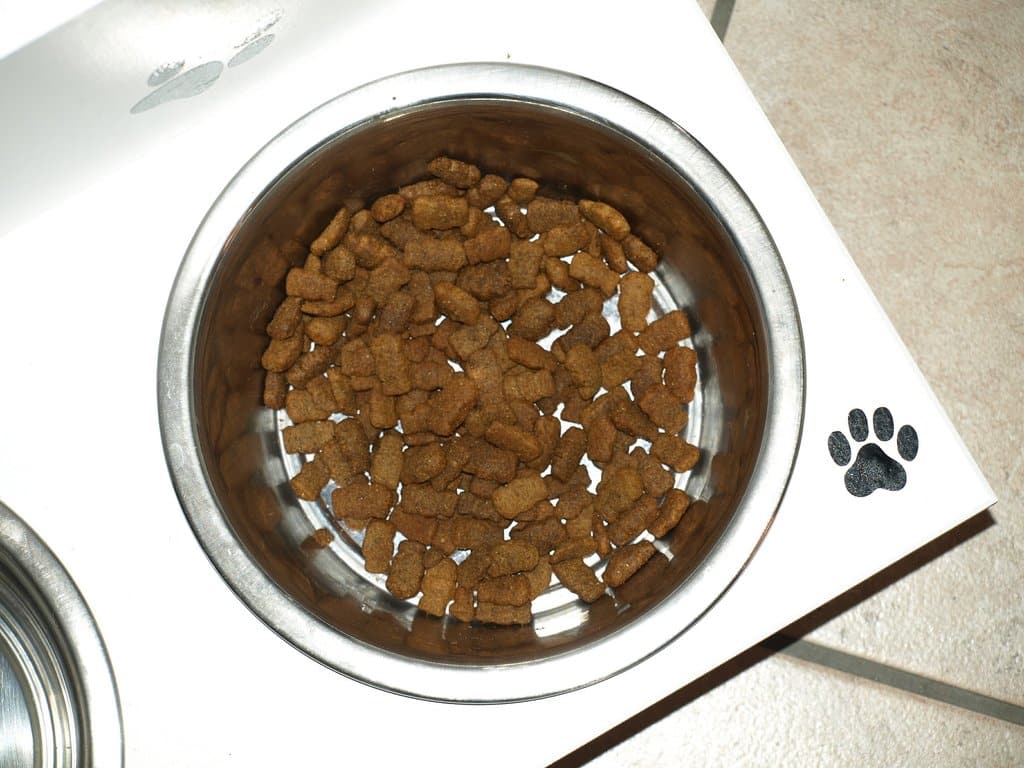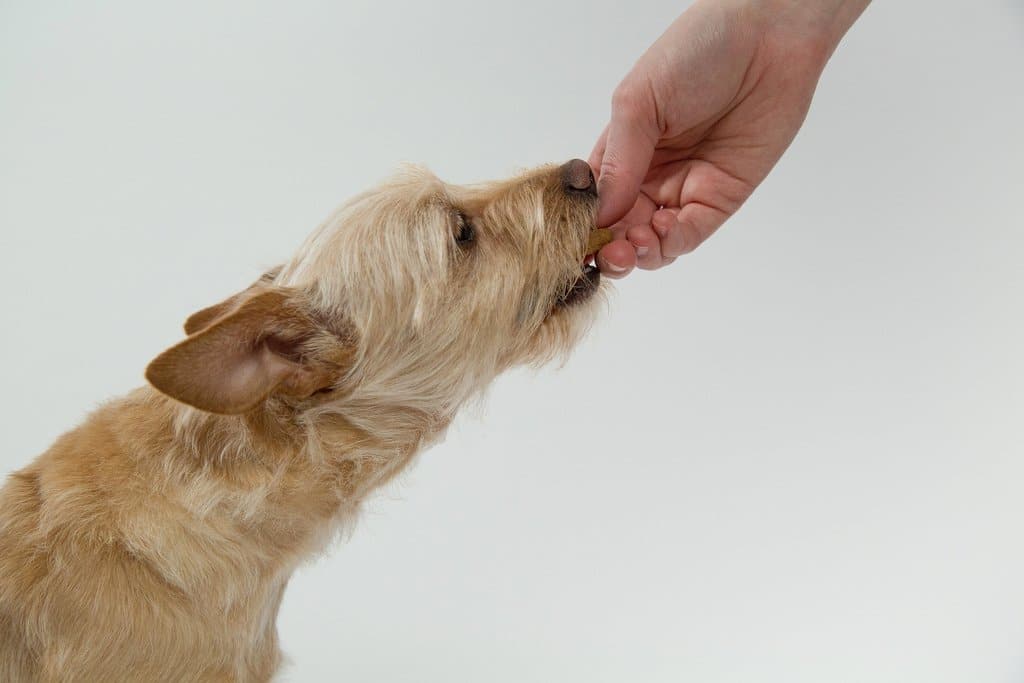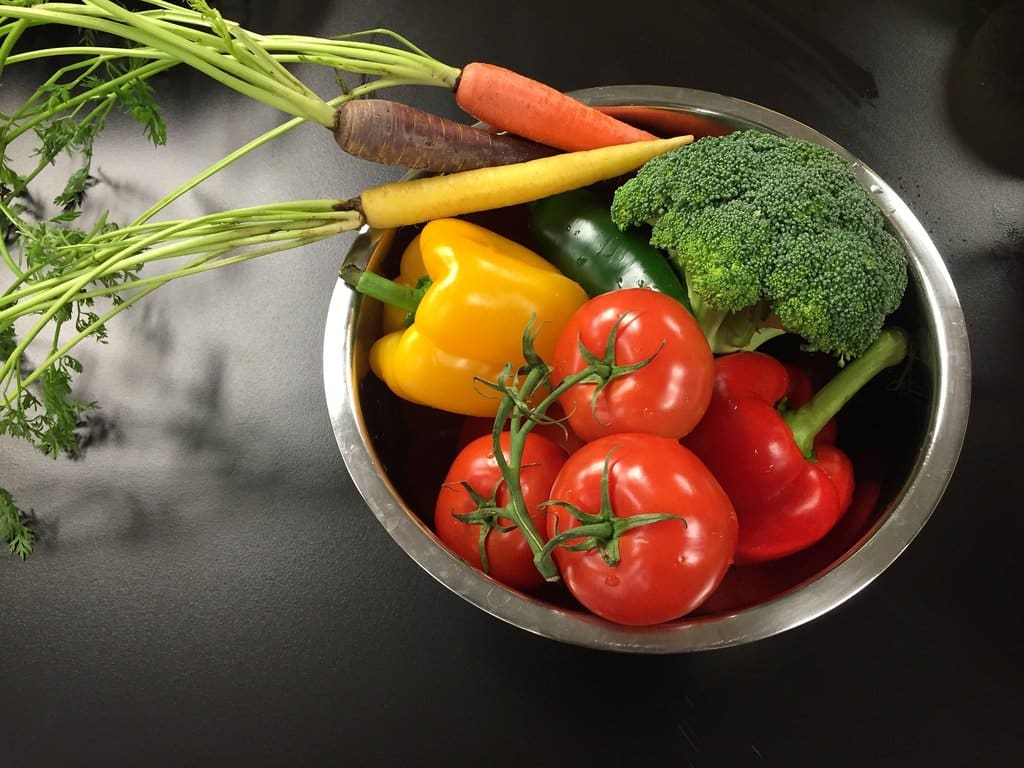You want to give your dog the best nutrition.
Is free feeding dogs the best way to do that?
What dry kibble lacks in nutrition (and it lacks a lot!), it makes up for in sheer convenience. How nice is it that you can simply add a scoop to your dog’s food bowl whenever it gets low?
But this feeding method (known as “free feeding”) can actually lead to a host of eating issues with your pooch.
In this article, we’ll take a closer look at the practice of free feeding dogs and show you how to incorporate scheduled meals.
Cons of Free Feeding Dogs
Take a minute to think about your favorite food. As delicious as it is, we’re willing to bet it wouldn’t seem so special if it was always in your refrigerator. Just like humans, dogs aren’t as excited by foods that are always available.
In fact, this often leads to picky eating.
Rather than looking forward to meal times, a free fed dog may get bored with the same old food that’s always lying around and start to sniff around the kitchen floor for something better. S/he may skulk underneath the dinner table waiting for a handout. You might even find that your dog doesn’t eat his food at all, but will eat treats (much like a toddler who refuses his dinner but asks for ice cream as soon as the plates are cleared).
Alternatively, free feeding dogs can lead to obesity.
Your dog might have no problem grazing throughout the day, eventually consuming more calories than if she were fed scheduled meals. Dogs don’t always listen to their hunger/satiety cues; sometimes, they’ll eat as long as something yummy is available.
How Often Should a Dog Eat?
Most experts agree on a “twice a day” schedule—one meal in the morning and one in the evening. Scheduled feeding creates a regular expectation of meal times and helps to boost their appetites.
Your dog might not be able to read the hands on a clock, but they can feel themselves getting hungrier. The closer it gets to meal time, the more they will anticipate eating (and gladly eat what’s in front of them).
Having a feeding schedule with a consistent amount of food also ensures that your dog doesn’t overeat.
What About Treats?
No more than 10% of a dog’s daily calories should come from treats. Dogs need hearty, nutritious meals to fuel their bodies, and filling up on Milk Bones is equivalent to you chowing down on Cheetos and Chips Ahoy.
Remember: dogs are omnivores (just like us). A diet of meat and vegetables is beneficial for them just as it is for humans. Letting a dog eat raw carrots and green beans is not only an exciting treat, it’s a great way to give them some nutrients.
Another good rule is to not give your dog treats too close to meal time. They’ll fill up on the treats and might not eat their meal. Save the treats for special occasions and visit a local dog bakery to make sure they’re getting the best!
Healthy Dog Snacks
Jerky or meat bark is a great option (especially for dog breeds that require a bit more protein in their diet). Just be sure to look for single ingredient versions with no additives and no products that originate from China.
Rice is another readily available food that’s great for dogs who may be experiencing a bout of tummy trouble. Just don’t add any salt or oil.
Finally, fruits and vegetables are the healthiest treats available. Also, they’ll enjoy them!
When serving produce to your dog, serve it the same way you would eat it. If you don’t eat the seeds, rinds, or stem, neither should your dog.
Some healthy things that dogs enjoy are:
- Apples
- Bananas (in moderation; they’re high in sugar)
- Bell Peppers
- Blueberries
- Broccoli
- Cantaloupe
- Carrots
- Cauliflower
- Celery
- Cucumbers
- Green Beans
- Pears
- Pumpkin (cooked or canned, not raw)
- Strawberries (watch the sugar content!)
- Sweet Potatoes (cooked, to make it easier on their digestion)
- Watermelon
This is not an exhaustive list by any means, but a good place to start when testing new treats for your pet to nosh on.
Foods Not Safe For Dogs
It’s a good idea to experiment in the kitchen and see which fruits and vegetables your dog will enjoy, but there are some foods that, while great for humans, are harmful to dogs.
Keep your dogs away from:
- Alcohol
- Caffeine
- Chocolate
- Citrus
- Dairy
- Grapes/Raisins
- Macadamia Nuts
- Onions
- Xylitol
- Yeast dough
Conclusion
Free feeding dogs might seem easier, but if it leads to obesity or picky eating, is it really worth it? Feed your dog healthy portions on a predictable schedule and supplement with the occasional healthy treat and you should see a happier, healthier dog.
At Rick’s Dog Deli, our meals and treats are specially formulated to provide the maximum amount of nutrition for any dog, despite their size, breed, or health condition.
Our meals are cooked with USDA-inspected ingredients and frozen to lock in the nutrients. Simply thaw and serve.
And what’s more, dogs love real food!



